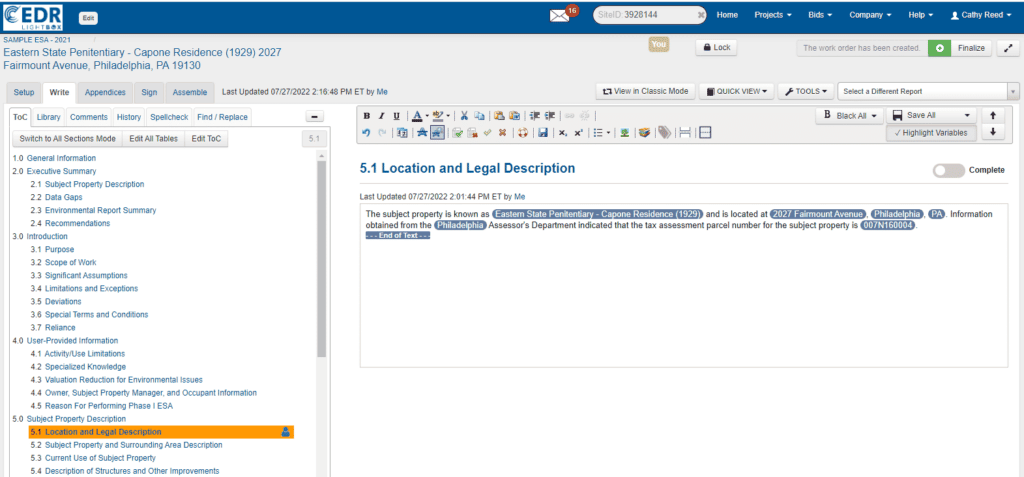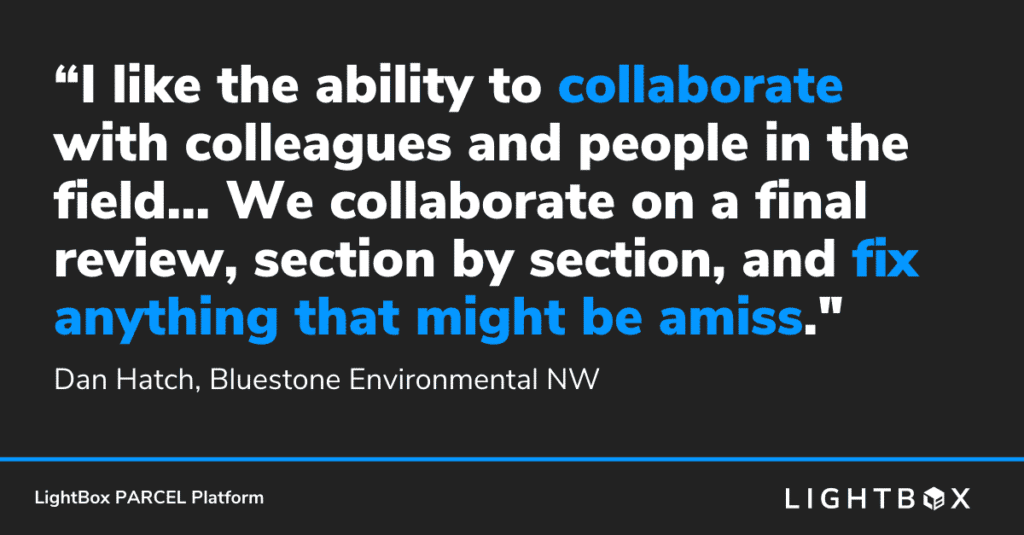I founded Bluestone Environmental NW about two and a half years ago. We primarily focus on property assessment, mainly contamination and related environmental work, and provide responsive, cost-effective services to clients in a range of areas. We do some hazardous materials surveys, and when necessary site characterization, remediation, clean up, and closure with regulatory agencies. Phase I assessments are the bedrock of our business, about 80 percent of which comes from repeat customers, including attorneys on both sides of transactions.
How does your report writing process work?
When I started out, the reports I saw other firms produce seemed too long and too hard to read. We used Word templates, and the company shared a kind of a tribal knowledge to get things done. When I launched Bluestone, I was set to mimic that, but starting from scratch seemed daunting. After discussing my concerns with LightBox EDR®, I realized the PARCEL templates could spare me a lot of headaches because I wouldn’t have to create my own in Word templates and continually update them as things progressed.
At first I was wary of using third-party templates because I thought they would be too rigid, but I soon found that PARCEL templates had far more flexibility than I realized. We could modify them to deliver a top-notch product to our clients. And we’ve always been able to quickly iron out any problems by talking to your support staff.
What’s most important to you, the time it takes to create a report or the quality of the final product?
Both are important. I prefer to focus on quality, though clients want to get their reports as fast as they can—I’m sure they would take delivery in a week if it were possible. Although our primary focus is always on the quality of the data, part of the quality formula for the client is our ability to turn around a report quickly. This is where PARCEL templates are very useful because, among other things, the data population tool is helpful, and I appreciate the ability to easily collaborate with peers and to see reports moving through the system.

There’s a big difference between writing reports manually in Word and the ease with which we’re able to create them from our data input in PARCEL. It’s a refined system. We import data and the report assembly process is streamlined. It’s been a tremendous help, saving time and allowing us to easily preview a report before delivering it. In the end, we’re not paid to handle administrative work, and the less time I have to spend creating and assembling a report, the more time I have to focus on other aspects of my business. An example of this is how easy it is to upload photos and descriptions into PARCEL reports—they fit seamlessly, not only into the appendix, but into any section of the report where it is helpful to provide a visual aid. Migrating raw data from our LightBox EDR® packages takes very little time and working with the PARCEL and LightBox EDR® teams has made it a painless process.
What other problems or challenges has PARCEL has helped you solve?
I like the ability to collaborate with colleagues and people in the field. One person mainly writes the reports and another does the site visits. They’re able to work together seamlessly. We collaborate on a final review, section by section, and fix anything that might be amiss.

We’re a full-service firm, and each project and client requires varying levels of detail and assessment. For instance, we have multiple templates (in-house) for site characterizations based on how much detail we need to convey. Some clients don’t need much in this area, others want a full-blown Phase II report. I have found the PARCEL template flexible enough to meet varying project requirements as needed. For example, we can easily include or exclude sections that pertain to scope items that are beyond the ASTM standard. We can also create templates that meet the standard, allow us to modify quickly to handle various framework requirements, and keep all of our clients happy.
